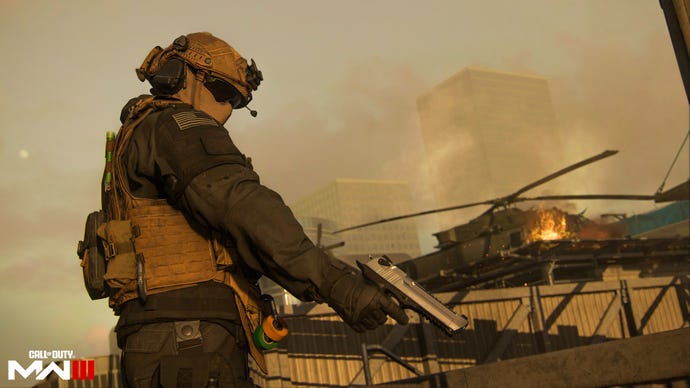For the first time, Call of Duty devs finally address skill-based matchmaking, but it probably won't change any minds
Call of Duty has finally, somewhat opened up about its complex matchmaking system, but what we got is unlikely to satisfy the hardcore.
If there's a single characteristic you could assign to the current era of Call of Duty, which does not change from game to game, it would be its matchmaking system. This has often been a black box; a topic Activision was never willing to address publically with the wider community, or at more private media events.
Over the years, this has created a sort of bro-science aspect to matchmaking, whereby content creators all poured their collective knowledge into not only figuring out how it works, but effectively exploit it to their advantage.
This is also why they never shut up about skill-based matchmaking (SBMM). It doesn’t matter the Call of Duty, if it came out in 2019 onwards, you’ll find countless videos/Reddit posts about why SBMM is 'worse than ever this year', or why it's 'ruining modern gaming' and so on.
Something has changed at the big Call of Duty mill, however, because developers behind the popular shooter have begun demystifying how matchmaking works in the game for the first time. In a new blog post, Call of Duty makers broke down how matchmaking works, and address the all-consuming topic of skill-based matchmaking.
In the post, the developer explains that the matchmaking system takes into consideration eight factors before it gets a player into a match, amongst them, of course, is player skill. Connection quality remains the heist weighted item, with time to match following in close second.
Hardcore players and content creators have long argued that ping is no longer king in modern Call of Duty matchmaking, hypothesising instead that player skill’s reach is so vast that the matchmaking intentionally places players in matches where they have a higher ping, just because it fits better within their skill level.
Interestingly, however, the way the game measures latency may not be as straightforward as we thought. While player ping to the nearest server is considered, it’s also one of two factors that get measured to determine connection quality. Call of Duty relies on so-called Delta Ping, which is the difference (in round trip time) of the data between the nearest server, and the one the lobby the system is evaluating has been placed on.
The blog explains that players will almost always end up on servers closest to them, but implies that this might not happen every time, however, likely due to the time to match factor.

But what about the often maligned SBMM; how does Call of Duty measure it? Well, the blog says that player skill is based on their overall performance (kills, deaths, wins, losses, etc.), and is constantly being updated as they play. The same factors get considered for teammates as well as enemy players.
The goal, of course, is to crush the variance of skill levels in a lobby, so a major gap between the most and least skilled does not exist. The blog goes on to explain that data has shown that taking skill into consideration “increases the variety of outcomes experienced by players of all skill levels,” adding that “all players (regardless of skill level) are more likely to experience wins and losses more proportionately.”
The blog also touches on the hardcore community’s resilient complaint that matchmaking only places them in “sweaty” lobbies, and that they’d like more variety. It does not name any specific plans, however; only that developers “will continue to test and actively explore ways to mitigate this concern.”
Skill has, of course, long been an element in game matchmaking, having started with the original Call of Duty 4: Modern Warfare in 2007. The grievance, however, is that matchmaking has become very strict, weighing recent performance more heavily, and catering to lower-skilled players to increase their engagement; thereby manipulating the experience for everyone - or so it goes.
Other elements the matchmaking takes into consideration include player platform, voice chat preference, input device, recent maps/modes, and playlist diversity. You can click the link at the top if you’re curious to learn more about how everything factors into the matchmaking algorithm.

.png?width=291&height=164&fit=crop&quality=80&format=jpg&auto=webp)






